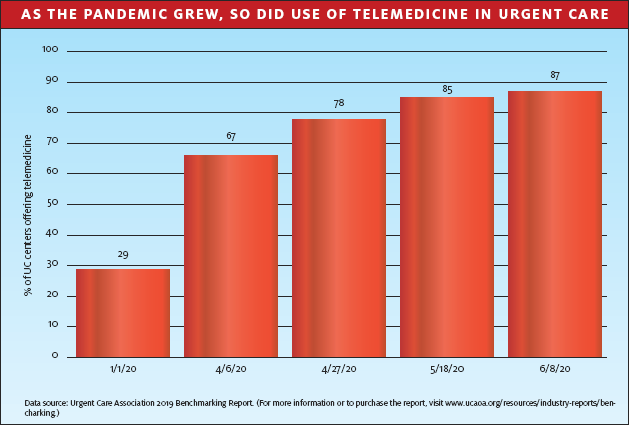If you surveyed Google data for 2020, you’d probably find that some of the most oft-used terms of the year were pandemic, covid, coronavirus, or even social distancing, work from home, and new normal. Let’s just say it’s been a year of seismic cultural change not only in the United States and across the globe, but also within the urgent care industry.
While, clearly, there have been many hardships and tragedies this year, urgent care has (again) proven that resilience ranks right up there with convenience, quality, and cost effectiveness as its own most-used terms.
The best example of that might be the strong upsurge in use of telemedicine by urgent care operators. For years, it seemed like virtual visits were just not appealing to most urgent care companies. Those that did dive in reported good results, but that didn’t really inspire the naysayers to give it a shot.
Faced with the reality of empty waiting rooms, though, many reconsidered their position—so many, in fact, that the number of urgent care centers offering some form of telemedicine service nearly tripled between January and June. Check out the graph below, courtesy of the Urgent Care Association, to see how the numbers jumped as the COVID-19 pandemic worsened.

